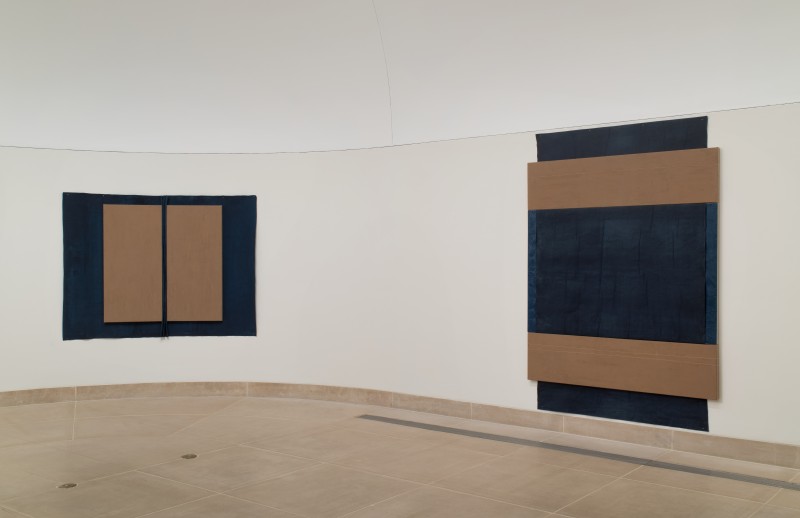Casey Kaplan


N. Dash at Hammer Musuem, Los Angeles
January 16, 2015
By the Editors at Art in America
N. Dash’s debut solo show, at New York’s Untitled gallery in 2012, included monochromatic, clay-painted, fabric-draped canvases and small photographs of tiny, frayed bits of cloth. Dash is preoccupied with material, and, more precisely, with making tactile interventions upon it. For her ongoing “Commuter” drawings series, she obsessively folds and creases pieces of paper during her daily subway rides, and then, back in her studio, coats the well-worn paper in graphite powder. At the Hammer Museum, for her first one-person institutional show, Dash offers a familiar array of canvases and black-and-white photographs (all untitled and dated 2014). This new body of work remains grounded in the territory she explored in her debut show, though the ritualistic, serial aspects of her practice now aim for higher ground and approach a sense of the divine.
Five multi-paneled paintings hang in one gallery of the museum. One of them, pigmented with graphite powder, is made up of two vertical canvas-mounted wood panels laid atop a larger one, the arrangement suggesting an altarpiece with hinged doors. Employing various combinations of adobe clay, string, linen and jute, the works display uncomplicated yet highly orchestrated layers, folds and tucks. In one example, two panels mounted with adobe-covered jute, placed side by side, hold in place three accordion folds in the large indigo-dyed fabric on which they hang.
The inspiration for much of the work on view comes from a quasi-religious, spiritual experience that Dash had during an initial visit, in 2003, to New Mexico, a locale that she now frequently makes pilgrimage to when not at her Long Island studio. Exploring an adobe dwelling, she found herself standing in a hole where the dirt had been removed to form the rammed-earth structure of the building. In an essay in the exhibition pamphlet, Dash recounts the moment, saying she was affected in some mysterious way by the displacement of the dirt.
The artist’s respect for humble materials is evident throughout the show. In one work, a panel mounted with adobe-on-jute is placed atop a larger panel bearing fabric colored with indigo dye and graphite; an unassuming length of string, similar to butcher’s twine, dangles down from the top of the smaller panel, reaching almost to the gallery floor. With such delicate, choreographed arrangements, Dash’s works are easy to anthropomorphize.
The photographs further elevate her materials. A series of nine black-and-white images of fabric scraps are placed on one wall of the gallery. These are what Dash calls “primary source material,” as stated in her essay. She gleans ideas from the act of constantly carrying and touching these little pieces of fabric. When they are worn out and irrevocably frayed, she photographs them in memoriam. The bits of curled fabric look and act like embryos, developing into the final works.
Placed in a procession on one wall of the museum courtyard are four black-and-white photos of cloth scraps, enlarged and printed on transparencies, and then mounted on light boxes about 6 feet tall. The unraveling scraps of fabric here appear colossal, meditative and luminous—transcendent like Rothko’s paintings.